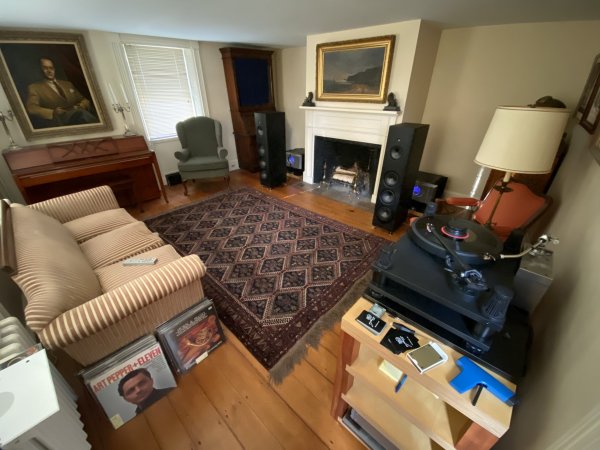It would be nice to go back to talking Peter's system. May be learning about what one consider not sounding natural in specific can in return describe what is natural. And we can use this info to remind us the way he hear or prefer when he makes comment of an equipment.
Thank you Tang. The other day Al M. and I went over to Madfloyd's place to compare preamps. We listened and compared and channeled Bonzo, because we were candid with Ian about our impressions. I asked Ian what he felt was missing with the sound of his system and what he hoped a different preamp would do. We listened some more. To my ears, the preamps did not address Ian's stated issue with his system.
With his permission, we decided to make some changes to his speaker set up. It is a rather long and interesting story best told elsewhere, but the resulting sound confirmed for me an audio truth: setup really matters.
In retrospect, just like the preferences expressed by Al and Ian for one of my arm/cartridges over the other, and my preference for the other combination, these preferences and differences are much less significant that the bigger picture of how the system overall performs. The preamps sounded different, but they were minor, perhaps hampered by the system set up. Changing how the speakers connected to the floor, their toe-in, and position, truly transformed the sound of his system.
This may sound hyperbolic, and Ron's ears may be perking, but in retrospection, I heard a transformation in Ian's system similar to the one I have been making over the past several months in my own. It was profound.
When a system goes from being asleep, or hifi sounding, to one that is awake, alive, full of energy and natural sounding, the differences between listeners' preferences for one cartridge/arm combination over another or for different preamps seem insignificant. It is the big picture towards a more natural sound that has captured my focus lately. The other stuff seems suddenly less significant. (vdH sibilance alert)
When Jim Smith years ago was nearly finished completing his work in my room, he said, "Now you will be able to more clearly hear the differences between various components." He was right. Ian is now reporting clearer differences between the preamps, than I heard at the time before the changes, and he and Al reported clear differences between by my two arm/cartridge combinations the last time they were here.
The important thing for me was that Al and Ian were able to enjoy my system perhaps more than before these changes toward a more natural sound, regardless of what arm/cartridge I happened to be playing. They simply preferred one over the other.
The other thing that Jim Smith told me before he left was something like this: "If you continue to think about last night's listening session the next morning or for the next few days, I know I have done my job." This is the big picture stuff and the value, I am learning, of a system that is beginning to sound more and more natural.


